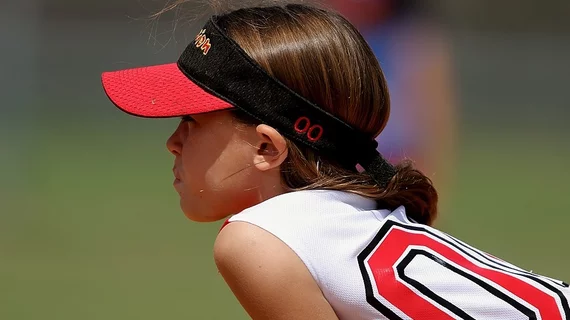Expert cardiologists answer 5 tough questions about COVID-19 and the hearts of athletes
The ongoing COVID-19 pandemic has left athletes—and, yes, the physicians who treat them—to ride a wave of uncertainty for much of 2020. The authors of a new analysis published in JAMA Cardiology hope to provide some much-needed insight, answering important questions based on the latest and greatest available data.
The team behind the report, a group of specialists with years of experience treating athletes at every level imaginable, was handpicked by members of the Sports and Exercise Cardiology Section of the American College of Cardiology.
“Relaxation of stay-at-home orders across the U.S. enabled many athletes to return to training and competition,” wrote first author Jonathan H. Kim, MD, MSc, of the Emory Clinical Cardiovascular Research Institute in Atlanta, and colleagues. “In collaboration with the sports medicine community and despite the current lack of supportive data, we have since accrued considerable experience overseeing return to play (RTP) testing among athletes with prior COVID-19 infection at all levels of sport. This document was written to address the most common questions posed by the media and in clinics, athletic training rooms, and ongoing discussions among cardiologists who participate in the care of athletes.”
These are five questions Kim et al. answered in their analysis:
1. How does COVID-19 impact most athletes?
Individuals with mild symptoms may present with fatigue; anosmia or ageusia; nausea, vomiting and/or diarrhea; headache; a cough; a sore throat; and nasal congestion. Progressing symptoms that might signal the need for hospitalization include a fever of 100.4 °F or higher; chills; severe lethargy; pneumonia; dyspnea and chest pain; and tightness in the chest.
Among hospitalized COVID-19 patients, the team emphasized, cardiac injury occurs approximately 20% of the time. There is “inconsistent evidence of direct myocyte viral invasion,” they added.
When it comes to athletes—loosely defined as “individuals who place a high premium on training, competition and sports achievement—the authors noted that the symptoms typically do not advance to the point that hospitalization is necessary.
“Our combined experience suggests that most athletes with COVID-19 are asymptomatic to mildly ill, and to date, RTP risk stratification has yielded few cases of relevant cardiac pathology,” the authors wrote. “However, we underscore that these observations may not reflect the true prevalence and attendant prognosis of COVID-19 cardiovascular involvement in athletes.”
2. When should clinicians turn to cardiac imaging?
Some recent studies focused on cardiac MR imaging (CMR) and COVID-19 have found that a high percentage of patients may show signs of myocarditis. However, the authors noted, those studies also included participants who were older and more likely to be suffering from other issues at the time of the exam.
Even research teams focused specifically on younger athletes have not been able to produce the level of results needed in this moment to make a detailed recommendation.
“In aggregate, these data underscore the need for carefully standardized, CMR-based phenotypic studies of athletes with COVID-19 that include appropriate control participants and clinically relevant outcomes,” the authors wrote.
With that in mind, Kim and colleagues did note that there may still be times when clinicians recommend CMR for a patient.
“Myocarditis preceded by a viral infection is a common causative mechanism of sudden cardiac death in athletes and military personnel and should be considered in the differential diagnosis of athletes with persistent symptoms and prior COVID-19 infection,” the authors wrote. “Symptoms including chest pain, exercise intolerance, ventricular arrhythmias, and abnormal findings on basic testing (i.e., cardiac biomarker level elevation, focal or global ventricular systolic function impairment) determine pretest probability and justify the use of CMR to confirm disease.”
In addition, the team added, “athletes with low clinical pretest probability of myocarditis and isolated abnormal CMR findings should not be presumed to have myocardial injury attributable to COVID-19.”
“In this clinical scenario, we recommend further risk stratification for inducible ventricular arrhythmias with maximal-effort exercise testing and extended ambulatory rhythm monitoring,” they wrote. “If this additional testing is normal, RTP with close clinical monitoring is reasonable.”
More info on the debate surrounding this topic is available here and here.
3. Should the risk of a COVID-related cardiac injury cause a sport to be temporarily canceled?
Based on the most recent data available, the risk of heart damage should not be the primary reason any sport or sports season is cancelled or postponed.
“The need to limit viral spread” is what should continue to drive such decisions.
4. If athletes have COVID-19 and remain asymptomatic, do they require additional testing?
“We do not advocate for CV risk stratification among athletes who remain completely asymptomatic with prior COVID-19 infection, following completion of CDC-guided self-isolation,” the authors wrote. “Given the current lack of published data, consideration of comprehensive screening for this population could be reasonable if it is based on research and data collection.”
5. When can high school athletes with COVID-19 return to action?
While most high school athletes with COVID-19 either remain asymptomatic or experience mild symptoms, there is still a small number of individuals in that age group who have developed multisystem inflammatory syndrome (MIS-C) weeks after the initial infection. So how should high school athletes with COVID-19 be treated, if at all, when a diagnosis is confirmed?
“To date, for high school athletes 15 years or older, there has been no compelling evidence of clinically relevant cardiovascular pathology following asymptomatic to mild COVID-19 infection,” the authors wrote. “Thus, we recommend, in the absence of systemic symptoms or persistent cardiovascular complaints, cardiovascular risk stratification is unnecessary after CDC-recommended self-isolation.”
In cases where the athlete experiences systemic or cardiovascular symptoms during or after infection, however, the possibility of MIS-C remains and they should be treated like an adult patient presenting with those symptoms would be treated.
Also, the team added, electrocardiogram screening after COVID-19 infection “is of limited value because of the limited sensitivity for the detection of myocarditis.”
The full assessment is available here.

